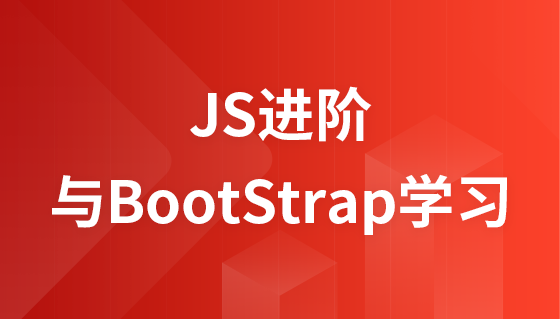
本文详细介绍了在spring boot应用中如何有效地测试camel xml路由,特别是利用`advicewith`方法进行路由修改和模拟。通过结合`@camelspringboottest`和`@springboottest`注解,我们能够正确加载spring应用上下文,从而使`advicewith`能够识别并操作xml定义的camel路由,实现灵活的单元测试和集成测试。
在Apache Camel项目中,路由的测试是确保业务逻辑正确性的关键环节。Camel提供了一套强大的测试工具,其中adviceWith方法尤为突出,它允许在运行时动态修改路由,从而方便地模拟外部系统、隔离测试范围或注入测试数据。然而,当Camel路由通过XML文件定义,并且项目运行在Spring Boot环境中时,如何正确地让adviceWith识别并操作这些XML路由,成为许多开发者面临的挑战。
adviceWith是Camel测试框架提供的一个核心功能,它允许在路由启动之前对其进行拦截和修改。通过adviceWith,我们可以:
这使得对复杂路由的单元测试变得简单高效,无需启动所有外部依赖。
通常,Camel的测试会继承CamelTestSupport类。然而,对于在Spring Boot应用程序中通过XML文件(如camel-context.xml或直接在Spring配置文件中)定义的路由,仅仅继承CamelTestSupport并不能直接让adviceWith工作。主要原因在于:
因此,我们需要一种方式来确保测试类能够访问到Spring Boot应用程序的完整上下文,包括其中定义的Camel XML路由。
为了在Spring Boot项目中成功地对XML定义的Camel路由使用adviceWith,关键在于正确加载Spring应用程序上下文。这可以通过结合使用Spring Boot的测试注解和Camel的Spring Boot测试支持来实现。
核心思路是:
假设我们有一个名为ww-inbound的XML路由,定义在一个Camel Spring XML文件中:
<route xmlns="http://camel.apache.org/schema/spring" id="ww-inbound" streamCache="true">
<from uri="{{ww.mail.server}}?username={{ww.mail.username}}&password={{ww.mail.password}}&unseen=true&delay={{ww.mail.consumer.delay}}"/>
<log message="Some entry logging"/>
<process ref="inbound.IntegrationHeaders"/>
<process ref="inbound.Converter"/>
<bean ref="inbound.Translator" method="translate"/>
<to uri="file://{{ww.incoming.fs.slug}}?fileName=${in.header.INT_MESSAGE_ID}.message.json"/>
<removeHeaders pattern="*" excludePattern="INT_CORRELATION_ID|INT_MESSAGE_ID"/>
<log message="Outbound AMQP Message..."/>
<to pattern="InOnly" uri="rabbitmq:{{amqp.main.queue}}"/>
</route>为了测试上述XML路由,我们需要修改传统的CamelTestSupport继承方式,转而使用Spring Boot的测试注解。
import org.apache.camel.RouteDefinition;
import org.apache.camel.builder.AdviceWithRouteBuilder;
import org.apache.camel.test.spring.junit5.CamelSpringBootTest;
import org.apache.camel.test.spring.junit5.UseAdviceWith;
import org.junit.jupiter.api.Test;
import org.springframework.beans.factory.annotation.Autowired;
import org.springframework.boot.test.context.SpringBootTest;
import org.springframework.context.ApplicationContext; // 引入ApplicationContext以获取CamelContext
import static org.apache.camel.builder.AdviceWith.adviceWith;
import static org.junit.jupiter.api.Assertions.assertNotNull;
// 1. 使用@CamelSpringBootTest 替代 CamelTestSupport
@CamelSpringBootTest
// 2. 使用@SpringBootTest 启动Spring Boot应用上下文,指定主应用类
@SpringBootTest(classes = RotWwApplication.class) // 替换为你的主应用类
// 3. 启用adviceWith功能
@UseAdviceWith
class InboundRouteTests {
// 自动注入CamelContext,它现在已经包含了Spring Boot加载的XML路由
@Autowired
private org.apache.camel.CamelContext context;
// 自动注入CamelTemplate用于发送消息
@Autowired
private org.apache.camel.ProducerTemplate template;
@Test
void testXmlRouteWithAdviceWith() throws Exception {
// 确保CamelContext和路由已加载
assertNotNull(context, "CamelContext should not be null");
RouteDefinition route = context.getRouteDefinition("ww-inbound"); // 使用XML中定义的路由ID
assertNotNull(route, "Route 'ww-inbound' should be found");
// 使用adviceWith修改路由
adviceWith(route, context, new AdviceWithRouteBuilder() {
@Override
public void configure() throws Exception {
// 替换路由的起点,使其从mock端点开始
replaceFromWith("mock:newStart");
// 替换路由的终点,捕获发送到rabbitmq的消息
weaveByToUri("rabbitmq:{{amqp.main.queue}}").replace().to("mock:amqpQueue");
}
});
// 启动CamelContext,注意在adviceWith之后启动
context.start();
// 创建一个Mock端点,用于断言发送到rabbitmq的消息
org.apache.camel.component.mock.MockEndpoint mockAmqpQueue = context.getEndpoint("mock:amqpQueue", org.apache.camel.component.mock.MockEndpoint.class);
mockAmqpQueue.expectedMessageCount(1);
mockAmqpQueue.expectedBodyReceived().body(String.class).contains("Some text"); // 假设body内容
// 向新的起点发送消息
template.sendBody("mock:newStart", "Some text for the route");
// 验证Mock端点
mockAmqpQueue.assertIsSatisfied();
}
}代码解析:
在Spring Boot环境中测试Camel XML路由,通过结合@CamelSpringBootTest和@SpringBootTest注解,能够有效地加载应用程序上下文,使得adviceWith机制可以识别并动态修改XML定义的路由。这种方法为开发者提供了一个强大而灵活的测试框架,能够对复杂的Camel路由进行精确的单元和集成测试,大大提高了测试效率和代码质量。遵循上述指南和最佳实践,可以确保你的Camel XML路由在Spring Boot项目中得到充分且可靠的测试。
以上就是利用adviceWith和Spring Boot测试Camel XML路由的详细内容,更多请关注php中文网其它相关文章!




Copyright 2014-2025 https://www.php.cn/ All Rights Reserved | php.cn | 湘ICP备2023035733号